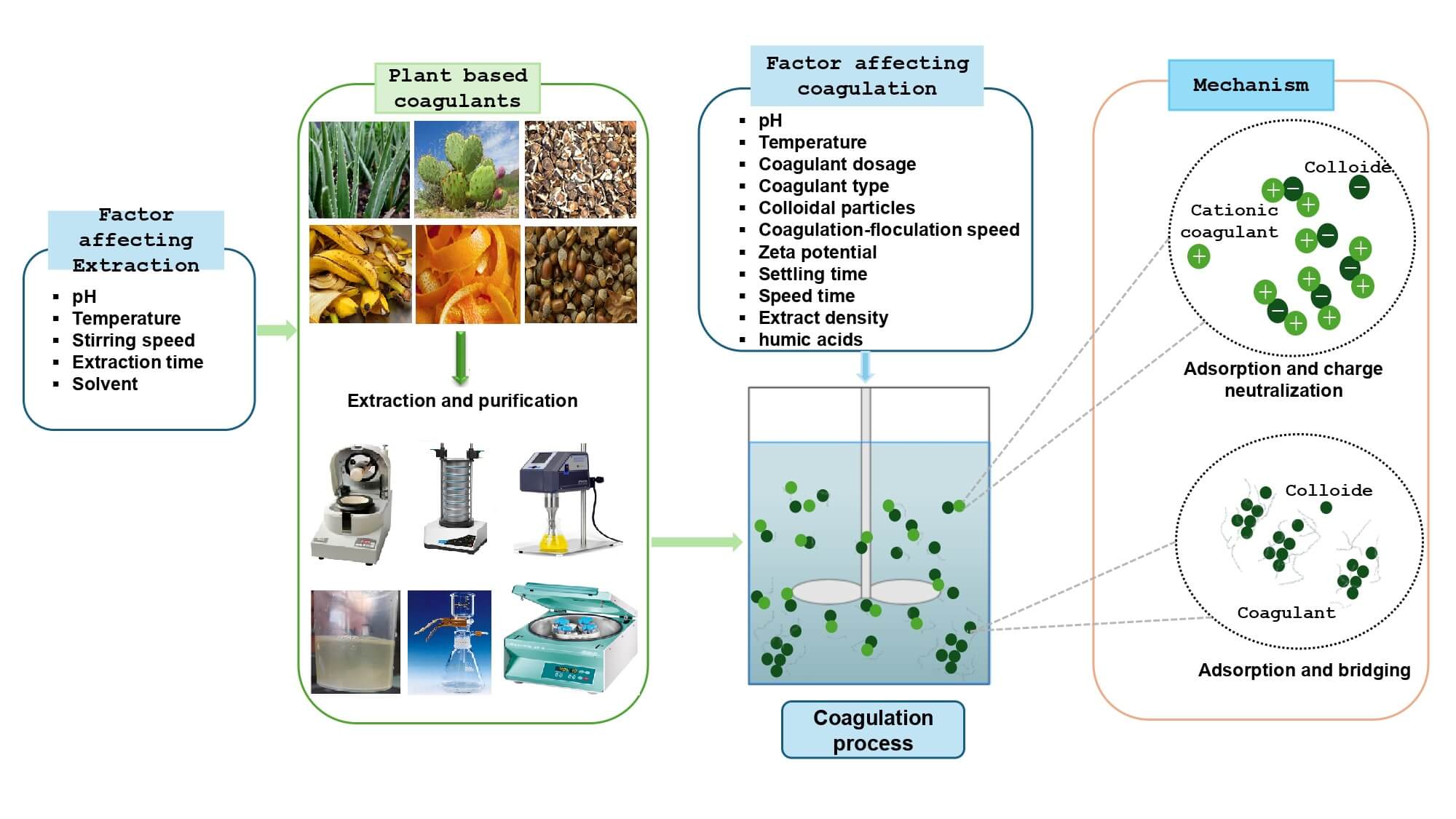 Open Access
Open Access
REVIEW
Application of Plant-Based Coagulants and Their Mechanisms in Water Treatment: A Review
1 Higher Normal School of Constantine, Ali Mendjeli Nouvelle Ville, Constantine, 25000, Algeria
2 Laboratory of Process Engineering for Sustainable Development and Health Products (GPDDPS), Department of Process Engineering, National Polytechnic School of Constantine, Constantine, 25000, Algeria
3 Department of Environmental Engineering, Laboratoire de Recherche sur le Médicament et le Développement Durable (ReMeDD), University of Salah Boubnider Constantine 3, El Khroub, 25012, Algeria
4 Laboratory LIPE, Faculty Process Engineering, University of Constantine 3, Ali Mendjeli Nouvelle Ville, Constantine, 25000, Algeria
5 Laboratoire d’Etude et Recherche sur le Matériau Bois (LERMAB). Ecole Nationale Supérieure des Technologies et Industries du Bois (ENSTIB)—University of Lorraine, Epinal, 88000, France
* Corresponding Authors: Abderrezzaq Benalia. Email: ; Antonio Pizzi. Email:
(This article belongs to the Special Issue: Special Issue in Celebration of JRM 10 Years)
Journal of Renewable Materials 2024, 12(4), 667-698. https://doi.org/10.32604/jrm.2024.048306
Received 04 December 2023; Accepted 27 February 2024; Issue published 12 June 2024
Abstract
This review describes the mechanisms of natural coagulants. It provides a good understanding of the two key processes of coagulation-flocculation: adsorption and charge neutralization, as well as adsorption and bridging. Various factors have influence the coagulation/flocculation process, including the effect of pH, coagulant dosage, coagulant type, temperature, initial turbidity, coagulation speed, flocculation speed, coagulation and flocculation time, settling time, colloidal particles, zeta potential, the effects of humic acids, and extraction density are explained. The bio-coagulants derived from plants are outlined. The impact of organic coagulants on water quality, focusing on their effects on the physicochemical parameters of water, heavy metals removal, and bacteriological water quality, is examined. The methods of extraction and purification of plant-based coagulants, highlighting techniques such as solvent extraction and ultrasonic extraction, are discussed. It also examines the parameters that influence these processes. The methods and principles of purification of coagulating agents, including dialysis, freeze-drying, ion exchange, electrophoresis, filtration, and centrifugation, are listed. Finally, it evaluates the sustainability of natural coagulants, focusing on the environmental, technical, and economic aspects of their use. At the end of this review, the readers should have a comprehensive understanding of the mechanisms, selection, extraction, purification, and sustainability of plant-based natural coagulants in water treatment.Graphic Abstract

Keywords
Cite This Article
 Copyright © 2024 The Author(s). Published by Tech Science Press.
Copyright © 2024 The Author(s). Published by Tech Science Press.This work is licensed under a Creative Commons Attribution 4.0 International License , which permits unrestricted use, distribution, and reproduction in any medium, provided the original work is properly cited.


 Submit a Paper
Submit a Paper Propose a Special lssue
Propose a Special lssue View Full Text
View Full Text Download PDF
Download PDF Downloads
Downloads
 Citation Tools
Citation Tools